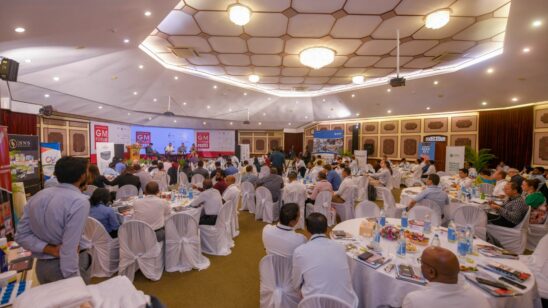
Auditing the Auditors, part I of III
A Report Card on Independent Quality Assurance by Steven Ferry
Don Quixote tilted his lance at windmills: we tilt ours at service standards that do not meet expectations, which is why I am spending a perfectly beautiful Florida spring Sunday inside, banging away on the keyboard when sensible people are beaching, sailing, or golfing.
We have been unsuccessful to give independent QA providers set standards for the butler service being offered by (463) luxury hotels around the world. Incorporating these standards on their own and helping to raise butler-service levels in the hospitality industry in a way that our small organization could not achieve.
We were asked by five-star properties, to conduct ‘mystery guest assessments of butlers’ and some even of their whole properties. To assess against internal hotel/chain standards, as well as those of other QA providers. Finding they fell short in various aspects, we were compelled to create our own standards.
1) For the two glaring omissions in QA standards: the world of the butler, as mentioned above, and EQ (emotional engagement)—of which more later;
2) Adjusting standards to move away from requirements that forced hotels into actions and behaviours that were robotic and inappropriate for the property.
The Idealistic effort to reform QA was not introduced until I met a kindred spirit: Jochen Ehrhardt of TRUE 5 STARS. Jochen single handedly has been engaged in a similar but more fruitful path: assessing the top 3,000 luxury hotels in the world, 1,200 of which he has visited personally, and only 1,500 of the hotels qualified to be featured on his website.
“TRUE 5 STARS is completely independent and unbiased,” Jochen pointed out once, “Its Quality Assurance Audit standards are the most detailed and demanding in the industry, while reflecting reality better because we constantly adapt to the latest market developments. Hotels typically score 15% lower compared to the feel-good QA audits of the larger QA providers, because standards cannot be raised if they are not set higher, as befits true five-star properties and the expectations of their guests.”
Even though a small percentage of hotels around the world provide butler service of one stripe or another, Jochen immediately saw the need for the standards of butlers too, and happily incorporated ours into TRUE 5 STARS. Assuming that specifications were necessary to maintain standards, while some individuals said to ‘Throw all rules away, be spontaneous and do whatever makes you feel good, etc.” We ended up with people, who cannot do the actions that they are being trained and paid for, or hold up the expectations of their customers.
The question was, were owners and hospitality management companies happy with the standards being set and managed by leading, independent QA companies?
Responses varied on perceived pros and cons, but one GM nailed the issue with, “Independent QA audits are good but a big revamp needs to be done because staff attitude is changing, as well guest expectations.”
Coming up with standards is no easy feat: As many standards can exist, and the difficulty becomes settling, generally via a committee of interested parties, on those standards by which guests will feel well-served. This varies by evolving culture and subcultures, generations and gender, so how does one put order into such a confusion or series of moving targets?
The answer is simple: Each property has a purpose or mission statement that is trumpeted by its branding and marketing, and supported by its location, structures, décor, ambiance, facilities, guest engaging activities, and service style—including key geographical and consumer markets to reach out to.
Why is it difficult to come up with standards that reflect an individual property’s manifestation of these elements which should add up to a specific purpose/ goal? and to update the standards from time to time?
Herein lies the contradiction with one-size-fits-all standards: for instance, what the Silent Generation expected from their hotel experience would bore the hind legs off a millennial; yet many of the standards offered currently suit the mentality and standards of the Silent Generation and perhaps the Baby Boomers, too. I, myself am disconcerted by the ubiquitous and health-damaging EMF pollution existing in the best of hotels and resorts worldwide today, even in pristine locations.
Our bodies rely on very delicate electrical systems to operate properly, and are blasted to kingdom come by wifi and cell phone reception—much in demand by green-conscious millennials. Not to sidetrack down this road of contention, but it does illustrate that the setting of standards that reflect current needs is tricky: for while a millennial would be happy with an iPad, in wifi exploring the virtual world, older people prefer to be in a tranquil setting enjoying the wealth of the moment afforded by the beauty of the real world consciously and proudly created by each hotel and resort.
This lack of customized standards that fit the purpose and markets of each property is the source of the frustration felt by most GMs. The pros outweigh the cons—or else QA programs would be a footnote in the history books—but it seems QA could use some QC!
GMs included other concerns about cross purposes or compromised interests: one company providing audits which, when passed—permit hotels and resorts to become paying members of its sister company—the problem being that the incentive exists to lower standards so as to increase membership.
Another issue that comes up is the constant effort to identify the guests who may be auditors—one hotel chain even posted a rogue’s gallery of known-inspector mug-shots in their staff areas. This “spot the inspector” game is a distraction from the reality of servicing guests, and an effort to paint a false picture for auditors is outed. Suffering from a lack of consistency between inspectors to guests – a lack of fairness in presenting scenarios; and an invariable lack of clarifying information into boxes either with “Satisfactory” or “Insufficient” judgements.
The GMs found benchmarking against their (local) competitors to be of most value with outside audits, however only one-in-three felt benchmarking actually resulted in improved performance. Placing the focus on beating the competition and improving the bottom line is like having one’s attention riveted on the scoreboard instead of the game in progress. The better approach is to focus on the setting and implementing standards that improve guest experience. Otherwise, one risks becoming irrelevant, especially if the standards are off-base to start with; and furthermore, if they are lowered in order to increase membership, or in the case of luxury hotels, if the standards are written as lowest common denominators of service it can encompass three-star-and-up facilities.
QA auditors and their organizations simply act as judges; perhaps they provide some follow-on training which is not held in much regard for its focus on hitting audit points and not addressing underlying issues that will actually change conditions. Wherelse action programs, proper analysis and addressing basic issues in training, resources, etc., staying the course to guide improvement are how a partner might deliver value.
All canvassed GMs considered EQ to be the most important element in QA, expecting approximately 50-50 consideration with facilities/hardware. This harks back to the early days of QA, when Egon Roney, published his first restaurant guide in the 1950’s, subsequently carried on a thriving business rating hotels. His guide was probably the first to recognize that increasing facilities and services offered didn’t necessarily equate to guest satisfaction.
Somewhere along the line, that focus on service quality was lost in QA programs—and as one ends up with what one pushes, hotels were nudged into focusing on material elements at the expense of live and solicitous service. There is no reason that understanding and adopting the proper use of emotions should take so long: all it takes is acknowledging that maybe we do not know everything there is to be known about emotions and emotional engagement.
“Emotional Quotient” might be better named “Emotional Quality,” but it does little to define what is meant by this all-important skill of emotional engagement. Current more-advanced concepts of EQ include the demonstration of genuine individual care & recognition; stepping above and beyond the expected to create unique moments that make a lasting impression. As a result, even though emotional engagement’s use is greatly desired, it’s power is not being utilized in the hospitality industry.
In Part II of this series, we will examine the difficulties faced by hoteliers in evaluating quality/gauging how they are doing and therefore coming up with workable strategies to move forward—including assessing the value to management and guests alike, of report cards generated by QA audits for management versus the report cards being published broadly to potential guests on social media.







